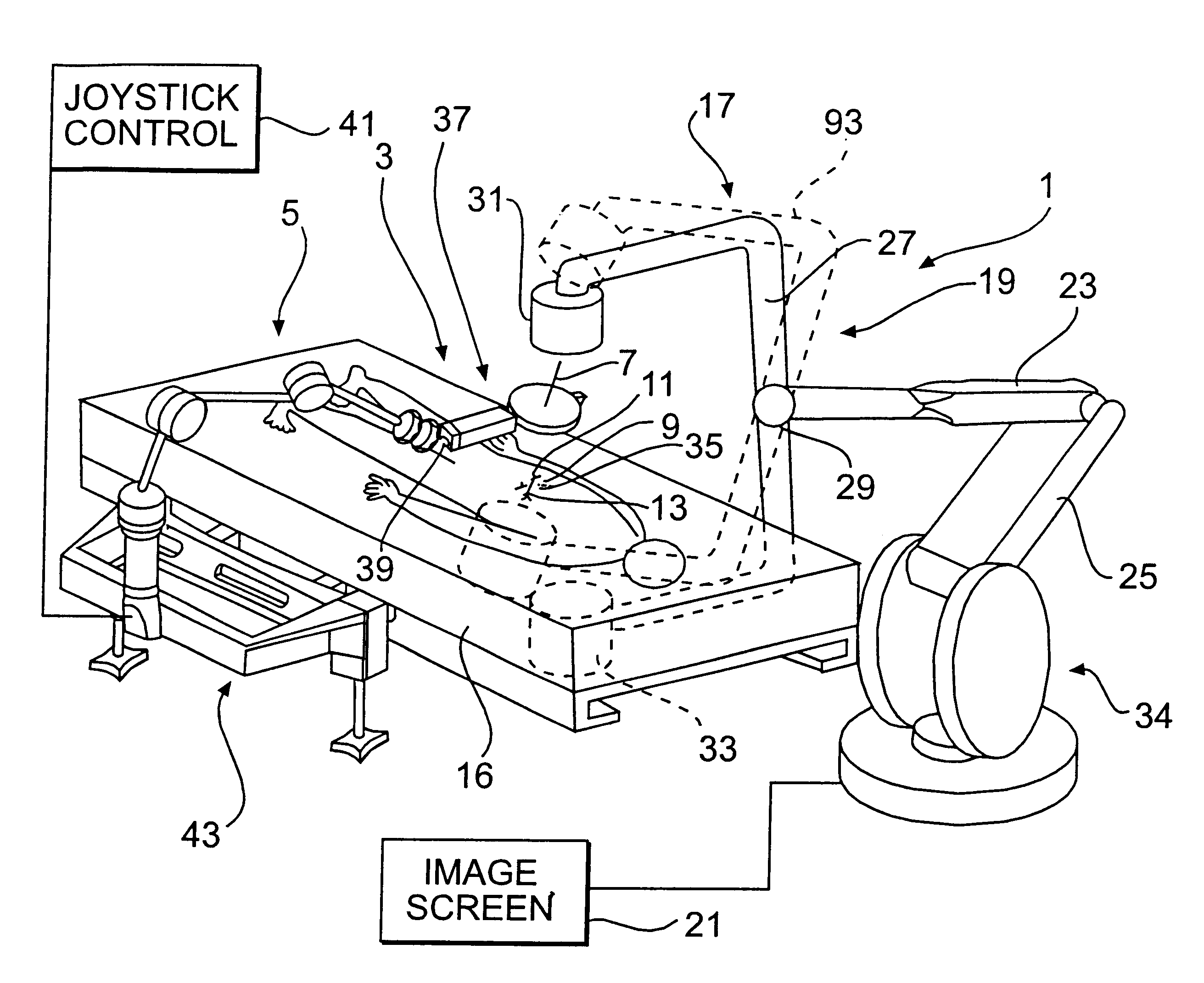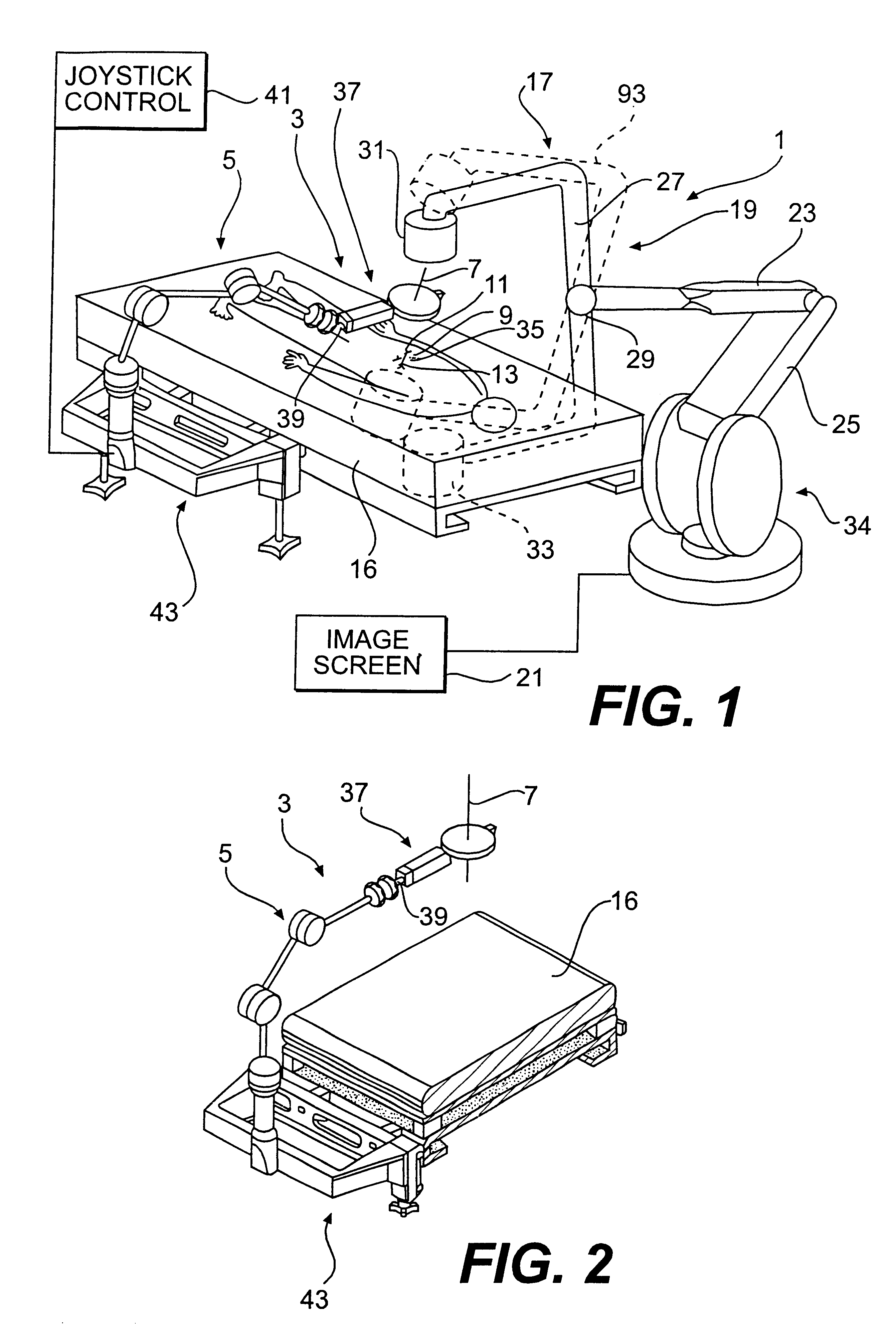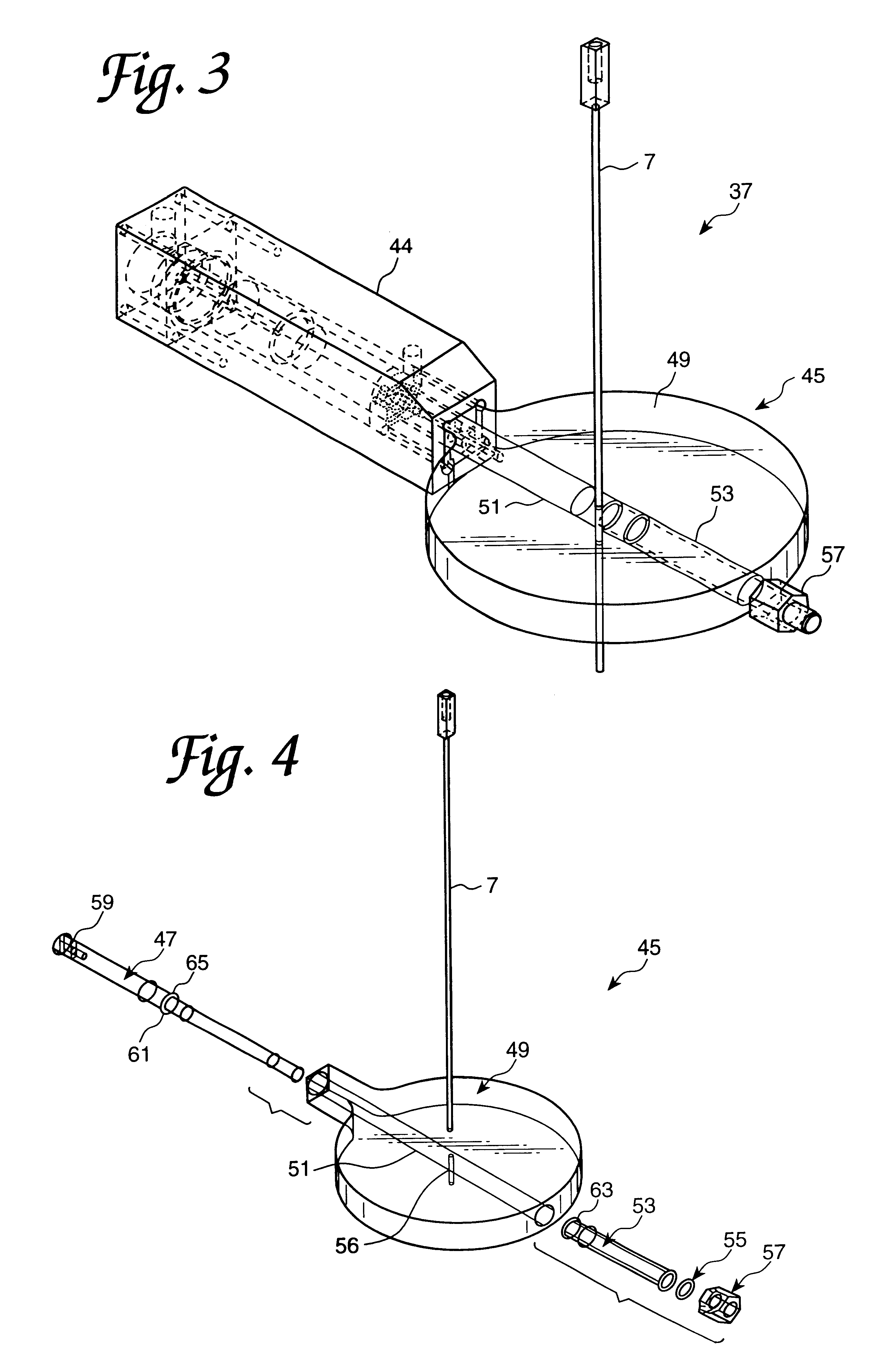Friction transmission with axial loading and a radiolucent surgical needle driver
- Summary
- Abstract
- Description
- Claims
- Application Information
AI Technical Summary
Benefits of technology
Problems solved by technology
Method used
Image
Examples
Embodiment Construction
As seen in FIG. 1, a system 1 for radiological image guidance in percutaneous surgery is shown. The system is disposed in an area suitable for surgery, such as an operating room. A novel needle insertion mechanism 3 comprises a passive needle manipulator 5 which maintains the needle 7 in position above a patient 9, and is effective in minimizing the surgeon's radiation exposure and disturbances in the needle trajectory during the insertion of the needle through insertion site 11 toward target 13. System 1 requires neither a fully actuated robot nor position feedback sensors by virtue of using a superimposed registration technique as described previously, thus minimizing costs.
As further shown in FIG. 1, the system further includes an operating room table 16 for the patient, and a conventional C-arm imaging device 17 including a C-arm 19 and an image screen 21. The C-arm imaging device may, for example, comprise the X-ray system disclosed in U.S. Pat. No. 5,549,439. Thus, by way of e...
PUM
 Login to View More
Login to View More Abstract
Description
Claims
Application Information
 Login to View More
Login to View More - R&D
- Intellectual Property
- Life Sciences
- Materials
- Tech Scout
- Unparalleled Data Quality
- Higher Quality Content
- 60% Fewer Hallucinations
Browse by: Latest US Patents, China's latest patents, Technical Efficacy Thesaurus, Application Domain, Technology Topic, Popular Technical Reports.
© 2025 PatSnap. All rights reserved.Legal|Privacy policy|Modern Slavery Act Transparency Statement|Sitemap|About US| Contact US: help@patsnap.com



